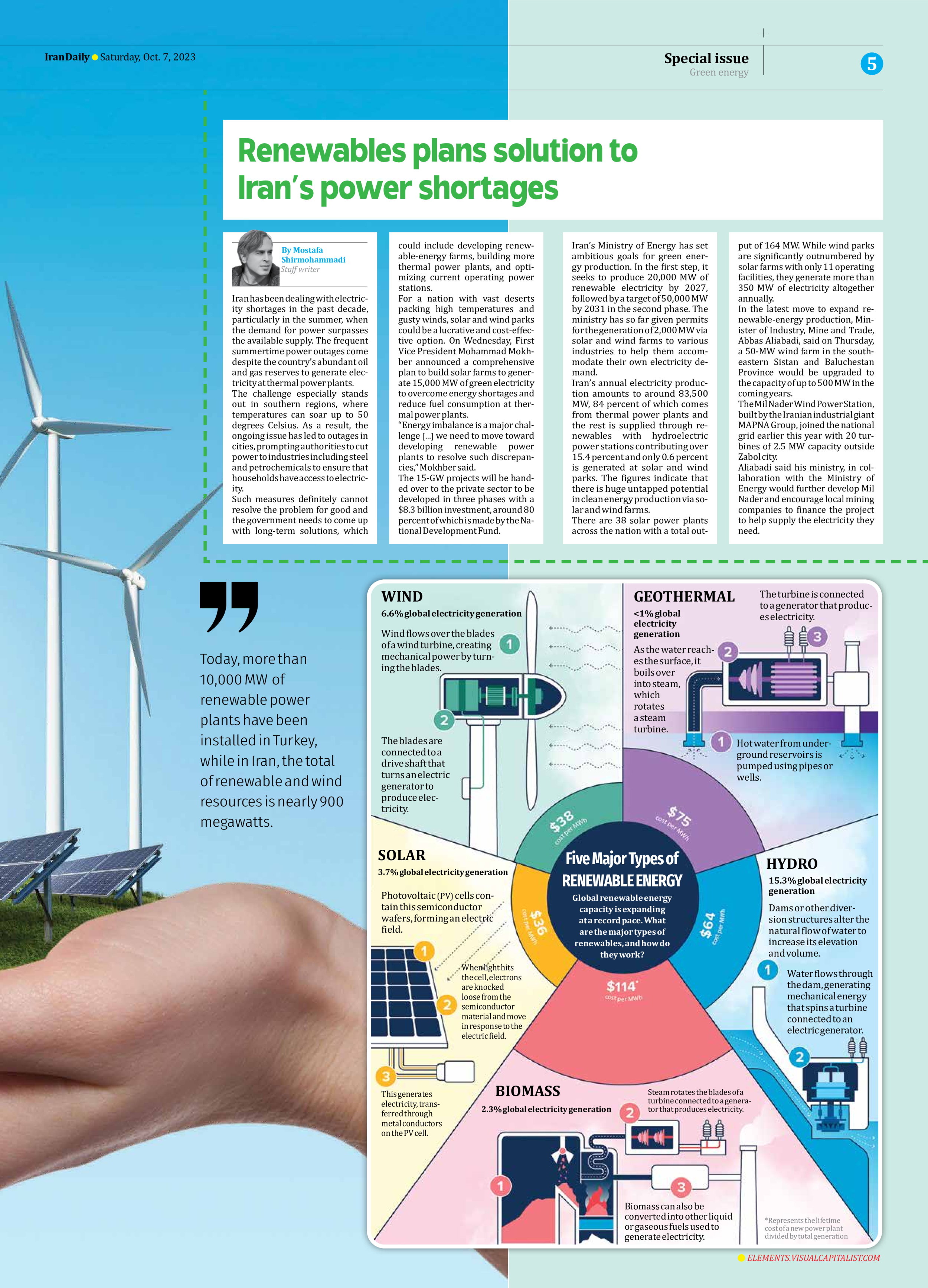
Renewables plans solution to Iran’s power shortages
By Mostafa Shirmohammadi
Staff writer
Iran has been dealing with electricity shortages in the past decade, particularly in the summer, when the demand for power surpasses the available supply. The frequent summertime power outages come despite the country’s abundant oil and gas reserves to generate electricity at thermal power plants.
The challenge especially stands out in southern regions, where temperatures can soar up to 50 degrees Celsius. As a result, the ongoing issue has led to outages in cities, prompting authorities to cut power to industries including steel and petrochemicals to ensure that households have access to electricity.
Such measures definitely cannot resolve the problem for good and the government needs to come up with long-term solutions, which could include developing renewable-energy farms, building more thermal power plants, and optimizing current operating power stations.
For a nation with vast deserts packing high temperatures and gusty winds, solar and wind parks could be a lucrative and cost-effective option. On Wednesday, First Vice President Mohammad Mokhber announced a comprehensive plan to build solar farms to generate 15,000 MW of green electricity to overcome energy shortages and reduce fuel consumption at thermal power plants.
“Energy imbalance is a major challenge […] we need to move toward developing renewable power plants to resolve such discrepancies,” Mokhber said.
The 15-GW projects will be handed over to the private sector to be developed in three phases with a $8.3 billion investment, around 80 percent of which is made by the National Development Fund.
Iran’s Ministry of Energy has set ambitious goals for green energy production. In the first step, it seeks to produce 20,000 MW of renewable electricity by 2027, followed by a target of 50,000 MW by 2031 in the second phase. The ministry has so far given permits for the generation of 2,000 MW via solar and wind farms to various industries to help them accommodate their own electricity demand.
Iran’s annual electricity production amounts to around 83,500 MW, 84 percent of which comes from thermal power plants and the rest is supplied through renewables with hydroelectric power stations contributing over 15.4 percent and only 0.6 percent is generated at solar and wind parks. The figures indicate that there is huge untapped potential in clean energy production via solar and wind farms.
There are 38 solar power plants across the nation with a total output of 164 MW. While wind parks are significantly outnumbered by solar farms with only 11 operating facilities, they generate more than 350 MW of electricity altogether annually.
In the latest move to expand renewable-energy production, Minister of Industry, Mine and Trade, Abbas Aliabadi, said on Thursday, a 50-MW wind farm in the southeastern Sistan and Baluchestan Province would be upgraded to the capacity of up to 500 MW in the coming years.
The Mil Nader Wind Power Station, built by the Iranian industrial giant MAPNA Group, joined the national grid earlier this year with 20 turbines of 2.5 MW capacity outside Zabol city.
Aliabadi said his ministry, in collaboration with the Ministry of Energy would further develop Mil Nader and encourage local mining companies to finance the project to help supply the electricity they need.







